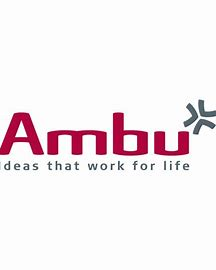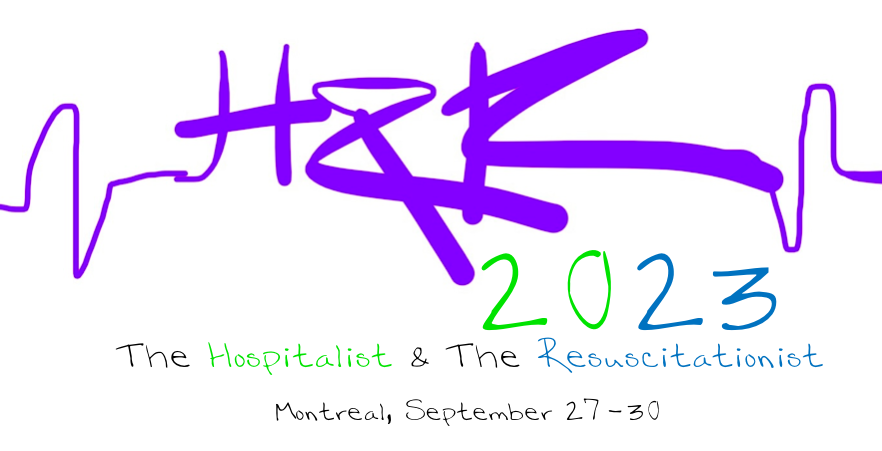Personally, I’ve never used it, so not really an issue to me. But it seems to generate a fair bit of emotion and debate, and having the pleasure of knowing some really smart and, in this case, highly experienced people, I think we have something good to share here, a story from Thomas Woodcock! This insight may help clinicians currently debating the issue…
Edomidate – A Brief Personal History.
By Thomas Woodcock, MD.
We all want Evidence, good solid peer reviewed communications with verifiable data, ideally randomised and controlled. But we are human, and our practices are also informed by unpublished experience, what used to be cited as “Personal communications”. I acknowledge the dangers of placing too much confidence in such evidence. Our recollections of events may become clouded or unreliable as the years pass. With that caution in mind, I am going to take the final opportunity to offer my unpublished recollections of events surrounding Iain Watt’s fortuitous discovery of the lethality of the intravenous anaesthetic agent etomidate back in 1983; forty years ago, though it only seems like yesterday.
This year our friends at San Raffaele Scientific Institute, Milan, Italy published a meta-analysis of studies reporting the use of etomidate to cover tracheal intubation in critically ill patients and concluded as follows;
We included 11 randomized trials comprising 2704 patients. We found that etomidate increased mortality (319/1359 [23%] vs. 267/1345 [20%]; risk ratio (RR) = 1.16; 95% confidence interval (CI), 1.01–1.33; P = 0.03; I2 = 0%; number needed to harm = 31). The probabilities of any increase and a 1% increase (NNH ≤100) in mortality were 98.1% and 92.1%, respectively.[1]
This came as no surprise to me, and was predictably followed by etomidate anaesthetists explaining that the harm (euphemism for lethal effect) could only be proven by enrolling thousands of participants in a blinded RCT. Imagine the Consent form.
We have a broad selection of intravenous anaesthetic agents to offer for your general anaesthetic, but one of them has had serious concerns raised about a lethal effect. With your permission we would like to randomise you to receive a safe drug or etomidate so that we can learn more about the lethal effect.
In 1983 I was an Englishman abroad, the London anaesthetist who was appointed to be the English anaesthetist on the Shock Team only because the outstanding candidate from Oxford had preferred to take up a job doing muscle relaxant research with Kitz and Katz in the USA. The Western Infirmary Glasgow (WIG) was a Victorian red brick building on the Byres Road. The Boss was Professor Iain McAllister Ledingham, Editor of the book series Recent Advances in Critical Care Medicine, a founder of The European Society of Intensive Care Medicine and one of its first Presidents. With many original publications on shock and interhospital transfer, in the clinic and in the laboratory, Iain Ledingham was as reverered as Pope John Paul II who had been granted an audience with the Prof during the first Papal visit to Glasgow in 1982. A photograph recording the event was prominent on Iain’s desk. As an American visitor to the Unit observed, this was surely the best Intensive Care service in England (sic)[2]. Up to 1982, intensive care patients at WIG were being sedated with propofol infusions, opioids and benzodiazepines, but by the time I arrived the preferred hypnotic was etomidate with morphine analgesia. It may be that the change was prompted by a 1982 report from Sheffield entitled “Safer sedation for ventilated patients. A new application for etomidate.”[3] The ICU looked to me like something out of the 1978 movie Coma, based on the novel by Michael Crichton. Most patients were sedated to immobility with the new wonder drug that had no histamine release and a stable haemodynamic profile – except, of course, for the patients who were also receiving dopamine. Nursing tasks were thus greatly simplified, and the staff were able to enjoy a post round morning tea break at which everybody was offered an egg “piece”.[4]
The research agenda at the time was broad. Complement activation and histamine release were blamed for capillary permeability changes in shock, and imbalance between the arachnadonic acid metabolites was blamed for arteriolar dysfunction and microvascular coagulation. Adam Fleck had his own team investigating the transcapillary escape rate of albumin in severe disease and injury. To everybody outside Glasgow glucocorticoids seemed to be the answer and Chicago surgeon William Schumer was their chief flag waver, claiming in 1976 that steroid therapy reduced the mortality of saline-treated sepsis in his service from 33% to around 10%.[5] We had all witnessed the almost miraculous Shock Reversal that often followed the infusion of 30 mg/kg methylprednisolone (Solumedrone in the UK). Upjohn Pharmaceuticals sent their representatives around the country to ensure that every intensive care physician was aware of this. When I told a London Upjohn Representative that I was heading to Glasgow, he warned me that WIG may be the only UK service refusing to treat sepsis with high dose steroids. He predicted that by the time I returned from Glasgow any lingering doubts about the life-saving power of Solumedrone would have been cast off.
When I arrived in Scotland I was tasked with investigating the effects of the thromboxane synthase inhibitor dazoxiben on prostaglandin production in sepsis patients.[6] Once a week, on Dr Winifred Finlay’s ICU ward round, we would be joined by biochemist Dr McKee and patient adrenal function test results were reviewed. These ladies had published their findings on serum cortisol levels in severely stressed patients the year before.[7] Now, hydrocortisone was being prescribed for patients deemed to need it, targetting a “normal” stressed serum cortisol and this seemed to be reducing mortality.[8] I was bold enough to ask Prof Ledingham why he was opposed to “pharmacological dose” steroid therapy, and he merely pointed out that the research evidence was very poor. More studies were needed. Finlay and McKee’s surprising data had been shared with Joe Stoddart, a respected Intensivist in Newcastle, England. Joe replied that he had looked at twenty consecutive “severely stressed” Geordie ICU patients, and without exception they had appropriately high serum cortisol levels. You are giving them something harmful, he concluded.
The surgical Shock Team Registrar was Ian Watt, a rather reserved chap with an Aberdonian sense of humour[9]. The Shock Team day started with an early morning debrief in the Laboratory. The Team was Ledingham, two anaesthetic Registrars, one Surgical Registrar, Technicians Ian and Morag, Secretary Dianne and, quite often, a greyhound. Our clinical responsibilities included the advanced management of shock patients. Only the Shock Team were allowed to do right heart catheter haemodynamic studies, and I was entrusted with Ed Sivak’s double indicator dilution machine that measured the extravascular thermal volume of the lungs. We Registrars were each On Call for two weeks, with one week off. This meant that we could dispatch two Shock Team members to any hospital in Scotland, to stabilise and if necessary bring shocked patients into WIG, any time of any day or night. One of us would be the designated Ambulance driver. But I digress, let’s talk more about Iain and the greyhound. At the end of the debrief the Registrars would head off to the ICU to join their rounds, but on days when Ian was experimenting on a dog one of us might stay behind to help him anaesthetise, intubate, ventilate and catheterise the animal.[10] He was using the Gurll model to investigate hypovolaemic shock. The stabilised animal was allowed to bleed until the mean arterial pressure was around 45mmHg. This hypovolaemic shock state was to be maintained for one or two hours before the shed blood was retransfused and the effect of experimental drugs on resuscitation could be tested.[11] The problem was that Iain’s greyhounds died during the hypotensive phase. I do not recall one experiment getting as far as the resuscitation stage. We pooled our intellects on the challenge, and decided that maybe the choice of pedigree greyhounds was an issue. Glaswegians, after all, are not easily compared to thoroughbreds and so Iain acquired some mongrel dogs. Unsurprisingly they died during hypotension too. Ian was getting desperate. In need of data for a Master of Surgery degree, he decided to change tack and get stuck into some clinical research. An anaesthetic Senior Registrar called Richard Marsh was our computer geek – he kindly took me to an international Computing In Anaesthesia and Intensive Care meeting in Rotterdam, where I think he presented a paper. Richard was constructing a relational database of severity of illness scores and intensive care outcome at WIG. He was alarmed to observe a big step-wise increase in ICU mortality occurring in 1982, and Watt’s new research brief was to investigate. The Shock Team had an office with three desks, one for each of us. My own desk was untidy, but Ian’s desk grew an ever increasing tower of patient records with his own notes and annotations. Then came his Eureka moment. Focusing on the cohort of major trauma patients, for whom one could calculate an expected mortality, he confirmed a very sharp rise in the observed mortality at the time there was a switch to etomidate sedation. Moreover, he found that almost all of the adrenal insufficient patients in the Finlay & MacKee series were sedated with etomidate. I obtained plates with cultures of human adrenocortical cells from Glasgow Medical researchers and added various anaesthetic agents in concentrations approximating therapetic plasma levels, before adding ACTH to stimulate cortisol release. I was sure I would find all sedative or analgesic medicines could inhibit cortisol release, but I was very wrong. Etomidate was a very powerful adrenocortical inhibitor. Perhaps the mystery was solved. Then one morning an investigation team representing Janssen arrived. They took over the shock team office, poring over the patient records and Ian’s research notes. For several days I could not get to my own desk. We reassessed Ian’s abysmal animal research history, and realised he had decided to anaesthetise the dogs with etomidate, in line with local clinical practice. He rushed back to the Laboratory to anaesthetise dogs with other anaesthetics and was relieved to find he could successfully run a Gurll model experiment. He used etomidate again, and found that a shot of hydrocortisone enabled dogs to survive long enough to reach the resuscitation stage. How could the Sheffield team have claimed that etomidate provided safer sedation for ventilated patients back in 1982? The reason became clear. Their case series was just 6 healthy patients ventilated for 24 hours after major maxillofacial surgery, and each had received dexamethasone to prevent surgical swelling.
Iain knew he had a responsibility to communicate his discovery as rapidly and widely as possible. This is why he chose a Letter to the Lancet. Unfortunately this prior publication caused some Editors of scholarly journals to turn down his more thoroughly considered and detailed manuscripts that should have followed. The Scottish national press reported that deaths had been caused by etomidate at WIG, but the anticipated public outcry did not materialise. We were spared the ignominy of an Inquiry. The number of Glaswegians whose lives were lost to etomidate was never ascertained. Experts came forward to claim that etomidate was still a preferred hypnotic induction agent for patients who would benefit from its haemodynamic stability, even though this claimed superiority was never demonstrated in sick patients. In the UK the Committee for Safety of Medicines merely drew attention to potential hazards of etomidate administration. In Denmark, the license to infuse etomidate was limited to 12 hours,
Silly comments from Experts included “it only happened in trauma patients who stayed ventilated for 5 days or more” and “a shot of hydrocortisone will block the lethal effect”. Should regulatory authorities have done more to prevent the continued use of this poison?
There are post scriptums to this story. In November 1984 Charles Sprung and colleagues published a landmark trial showing that impressive early shock reversal with high dose corticosteroids was NOT associated with increased survival of patients with severe, late septic shock.[12] I had been offered a critical care research post for 1985-6 at The Victoria Hospital, London, Ontario but Upjohn withdrew their research funding and so I had to seek alternative employment. I went instead to a Fellowship at The University of Western Ontario (UWO) in London.[13]
When Charles Sprung later devised and led an international multicentric study on Hydrocortisone Therapy for Patients with Septic Shock (CORTICUS) I was pleased to be a contributing investigator.[14]
A final PS that I forgot to add is that my notoriety in the adrenal insufficiency arena got me tasked with a Working Party on the topic back in 2012. We did not achieve a publishable consensus until 2020.15 I thought it might be impossible. Anaesthetists in the UK severely underestimate the dangers of poor & inconsistent management in critical care. Many accused us of overstating the danger, while the endocrinologists were dismayed at the lack of commitment to do better.
______________________
Co-Published on Osler https://osler.app.link/1uB7SSRwUzb on May 18th, 2023
[1] J Crit Care 2023 Apr 29. 77:154317. 10.1016/j.jcrc.2023.154317
[2] I asked the distinguished visitor where the best intensive care unit in the world was; The Vic, in London Ontario was his confident answer. Iain agreed. And so I later went on to spend a year in that welcoming town, and met William (Bill) Sibbald).
[3] PMID: 7048991
[4] In Glaswegian, a piece is a toasted slice of bread split into two thin slices. The usual filling was a tiny spread of scrambled egg.
[5] https://doi.org/10.1016/j.jcrc.2023.154317
[6] Dazoxiben almost completely blocked the synthesis of thromboxane A2, but there was no discernable change in the patients shock state.
[7] Lancet 1982 Jun 19. 1:1414-5. 10.1016/s0140-6736(82)92531-4
[8] Lancet 1983 Feb 26. 1:484. 10.1016/s0140-6736(83)91489-7
[9] Humour was important in Glasgow at that time, as a young Billy Connolly was making national headlines as an outstanding comedian. I was told that Winifred was the daughter of Scotland’s most famous comedian Alec Finlay.
[10] We each had a Home Office License to conduct terminal animal experiments under anaesthesia. An Inspector called from time to time to ensure our work was humane.
[11] It is an under appreciated fact that much of the post haemorrhagic shock fatality occurs during resuscitation.
[12] N Engl J Med 1984 Nov 01. 311:1137-43. 10.1056/NEJM198411013111801
[13] I became the first researcher to report measurements of cerebral blood flow and cerebral metabolic rate for oxygen during cardiac surgery with induced hypothermia on cardiopulmonary bypass. I was allowed to spend occasional days at the Vic when my contractual commitments at UWO allowed.
[14] N Engl J Med 2008; 358:111-124 DOI: 10.1056/NEJMoa071366
15Anaesthesia 2020 May. 75:654-663. 10.1111/anae.14963



